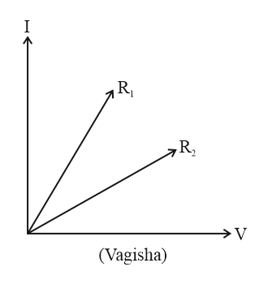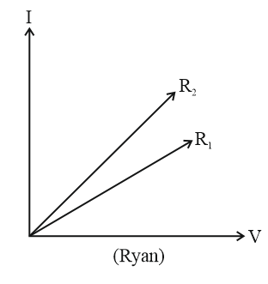Abhishek Chandra Solutions for Chapter: Electricity, Exercise 2: EXERCISE
Abhishek Chandra Physics Solutions for Exercise - Abhishek Chandra Solutions for Chapter: Electricity, Exercise 2: EXERCISE
Attempt the free practice questions on Chapter 1: Electricity, Exercise 2: EXERCISE with hints and solutions to strengthen your understanding. Eduwiser's CBSE PHYSICS FOR CLASS X solutions are prepared by Experienced Embibe Experts.
Questions from Abhishek Chandra Solutions for Chapter: Electricity, Exercise 2: EXERCISE with Hints & Solutions
Name the material used for making filaments of electric bulbs.
Which material is used for making the heating element of an electric iron?
A wire of resistivity is pulled to double its length. What will be its new resistivity?
Vagisha and Ryan perform experiments on two given resistors and . They get the following plots: 

If it is given that , whose graph represents the situation correctly? Justify your answer.
The electrical resistivities of a few materials are given below in ohm-metre. Which of these materials can be used for making element of a heating device?
| Material | Resistivity (in ohm-metre) |
| A | |
| B | |
| C | |
| D | |
| E | |
| F |
Electrical resistivities of some substances at are given below:
Silver :
Copper :
Tungsten :
Iron :
Mercury :
Nichrome :
Answer the following question in relation to them:
Among silver and copper, which one is a better conductor? Why?
Electrical resistivities of some substances at are given below:
Silver :
Copper :
Tungsten :
Iron :
Mercury :
Nichrome :
Answer the following question in relation to them:
Which material would you advise to be used in electrical heating devices? Why?
Two wires, one of copper and other of manganin, have equal lengths and equal resistances. Which wire is thicker? It is given that resistivity of copper is lower than that of manganin.
